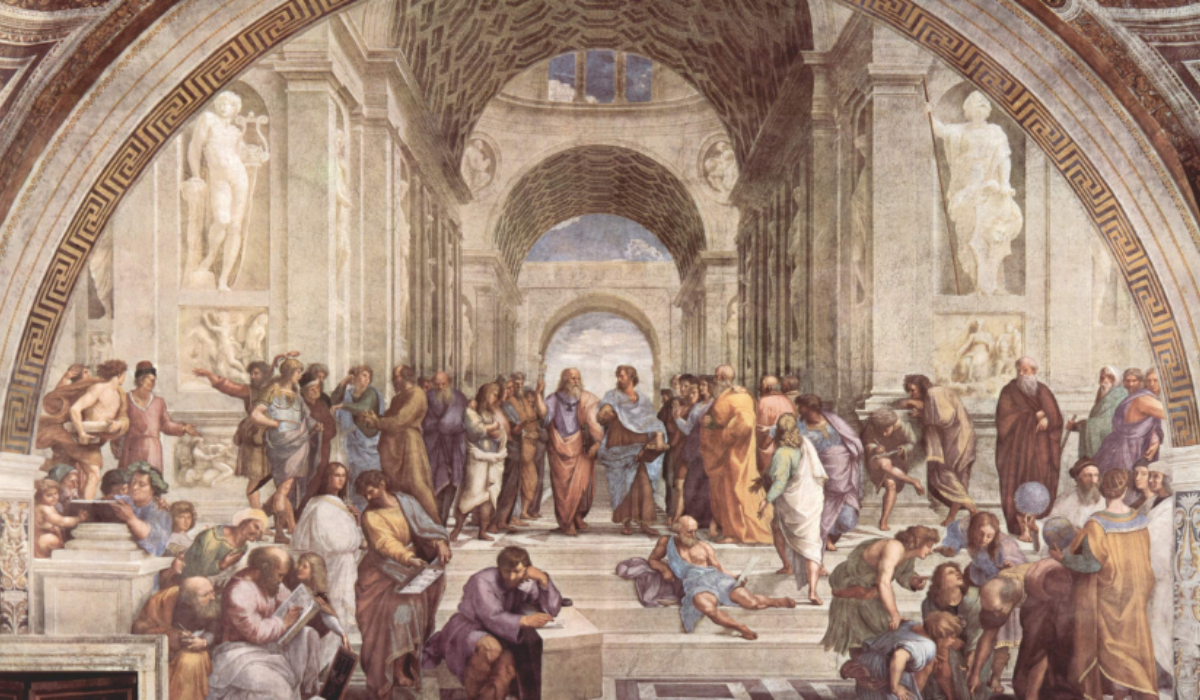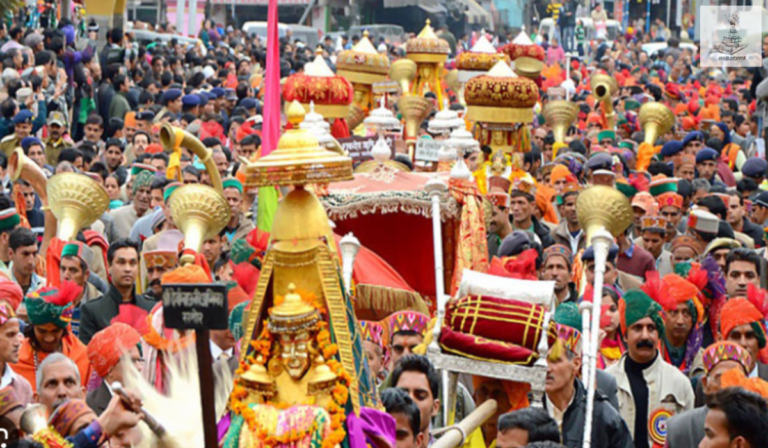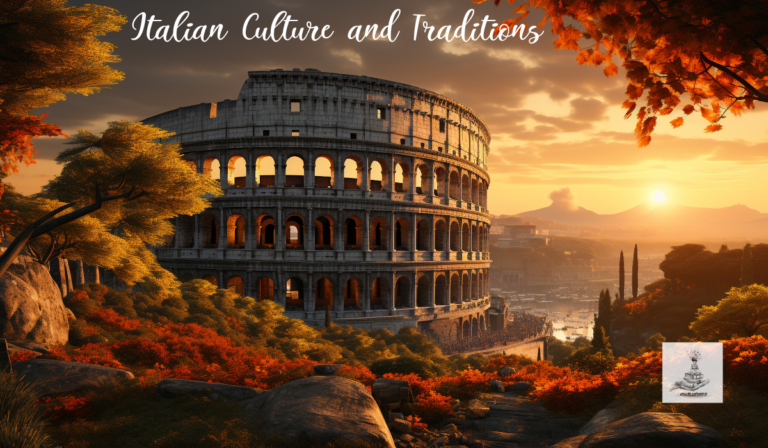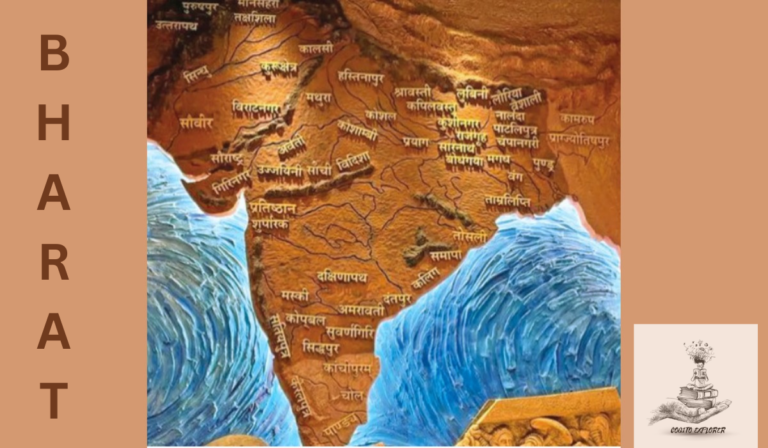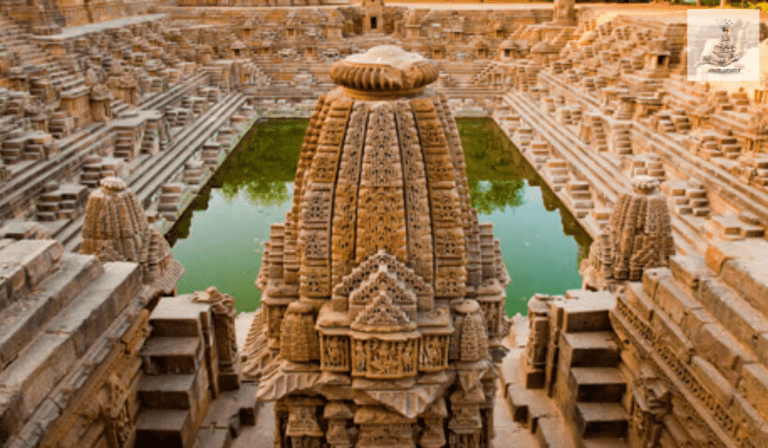A snapshot of Civilizational Journey
In the annals of civilizational foundations, we had previously discussed the characteristics of civilizations, their interactions with the surrounding geography, and the traces they leave on each other. Here we will enumerate such civilizations and discuss such imprints, left in the world’s landscape as well as in the global culture.
Civilizations of Ancient World
Ancient civilizations, despite their diversity, shared common features that defined their character. They often had well-planned urban centers, developed agriculture, and created writing systems for communication and record-keeping. Centralized authority, religious beliefs, and social hierarchies were prevalent, and trade routes facilitated cultural exchange.
Monumental architecture showcased technological achievements, and artistic and cultural expressions reflected societal values. Legal systems maintained social order, and some civilizations also made contributions to early science. These flagship features collectively shaped the identity of ancient civilizations, leaving enduring legacies in history. Some of those major civilizations are enumerated below.
Mesopotamian civilization
Mesopotamian civilization was situated in the fertile land between the Tigris and Euphrates rivers. Characterized by city-states like Ur and Babylon. Mesopotamia excelled in agriculture through advanced irrigation. The Sumerians developed cuneiform writing for administrative and religious purposes. Legal codes like the Code of Ur-Nammu and the Code of Hammurabi set early standards.
The polytheistic belief system, reflected in ziggurat temples, played a significant role. Socially structured with limited mobility. The society engaged in trade and created technological innovations. Military conflicts and the decline of city-states led to the rise of successive civilizations like the Assyrians and Babylonians. Leaving a lasting impact on human history.
Egyptian civilization
Ancient Egyptian civilization, thriving along the Nile River, was characterized by its unique features. Ruled by divine pharaohs with centralized authority. Egypt developed a complex polytheistic religion, leaving an indelible mark on monumental architecture like The Great Pyramids and Temples. The hieroglyphic writing system, social hierarchy, and advanced agricultural practices contributed to Egypt’s stability. Engaging in trade, Egyptians made mathematical and astronomical contributions. Their distinctive art, literature, and mummification practices reflect a rich cultural legacy. Despite enduring for millennia, Egypt eventually faced decline, succumbing to foreign rule by the Persians, Greeks, and Romans. The civilization’s impact on architecture, culture, and intellectual pursuits persists in global fascination.

Indus Valley Civilization
The Indus Valley Civilization, flourishing from around 3300 to 1300 BCE in the northwest of the Indian subcontinent, was a sophisticated ancient society marked by advanced urban planning seen in cities like Harappa and Mohenjo-Daro. Engaging in extensive trade, the civilization excelled in handicrafts and metalwork. Despite a well-organized social structure, much remains unknown due to the undeciphered Indus script found on seals. The society’s agriculture, supported by advanced irrigation, contributed to its prosperity. The reasons for its decline and disappearance are unclear, with theories ranging from environmental changes to invasions. The legacy of the Indus Valley Civilization endures in its impact on subsequent cultures in the Indian subcontinent.
Chinese civilization
Chinese civilization, one of the world’s oldest, has a history marked by dynastic rule, cultural achievements, and technological innovations. Emerging along the Yellow and Yangtze Rivers, various dynasties contributed to China’s rich tapestry. Imperial governance, Confucian and Daoist philosophies, and the construction of the Great Wall are notable features. China’s influence extended along the Silk Road, fostering trade and cultural exchange. The civilization pioneered inventions like papermaking and gunpowder.
Traditional arts and literature, including calligraphy and classical poetry, reflect deep cultural roots. Facing dynastic declines and foreign invasions, China underwent significant 20th-century transformations. Establishing the People’s Republic of China in 1949. Today, China stands as a major global economic player, with its ancient legacy continuing to shape the nation and impact the world.
Greek civilization
Ancient Greek civilization, characterized by city-states, democracy, and intellectual flourishing, has had a profound and enduring impact on Western culture. Notable features include the development of democracy in Athens, the contributions of philosophers like Socrates and Aristotle, and pioneering achievements in drama and theater.
Greeks excelled in city planning, architecture, and classical art, leaving behind iconic structures and sculptures. Military conflicts, including the Persian Wars and the Peloponnesian War, marked Greek history. Scientific and mathematical advancements, literature such as the epics of Homer, and the Hellenistic period further enriched Greek civilization. The enduring legacy of ancient Greece resonates in politics, philosophy, art, and science, shaping the foundations of Western civilization.
Roman civilization
Roman civilization, originating in the city-state of Rome, evolved from a republic to a vast empire that spanned three continents. The Romans established a sophisticated legal system and excelled in engineering and architecture, creating iconic structures like the Colosseum and aqueducts. The Latin language and Roman alphabet left a lasting linguistic legacy. The Roman military, with disciplined legions, contributed to the empire’s success. With the transition to imperial rule, Augustus became the first emperor, marking the beginning of the Roman Empire. Despite cultural achievements in literature and mythology, internal challenges and invasions led to the decline and eventual fall of the Western Roman Empire in 476 CE. The legacy of Roman civilization is profound, influencing law, governance, architecture, and language in Western cultures. The Eastern Roman Empire, known as the Byzantine Empire, continued the Roman legacy for centuries.
Maya civilization
The Maya civilization, spanning from around 2000 BCE to the 16th century CE in Mesoamerica, was characterized by city-states, advanced agriculture, and intricate cultural achievements. They developed a sophisticated hieroglyphic writing system for recording historical and religious events. Maya mathematicians created intricate calendar systems.
Deeply connected to astronomy, they aligned their architecture with celestial events. Maya art and sculpture depicted mythological themes, while religious beliefs involved elaborate rituals and ceremonies. Despite their mysterious decline around the 9th to 10th centuries CE, Maya civilization’s ruins have been rediscovered. Shedding light on their significant contributions to mathematics, astronomy, and culture. Modern Maya communities continue to preserve cultural traditions.
Iranian civilization
Ancient Iranian civilization, encompassing Elam, the Achaemenid, Parthian, and Sassanian Empires, showcased a rich and diverse history. Under Cyrus the Great, the Achaemenid Empire became one of the world’s largest, promoting tolerance and contributing to human rights, as evidenced by the Cyrus Cylinder. Achaemenid architecture, notably at Persepolis, displayed grandeur.
Zoroastrianism, the dominant religion, introduced influential concepts. Conquests by Alexander the Great and subsequent empires, like the Parthians and Sassanians, marked the region’s evolution. Persian literature, especially the Shahnameh, and contributions to the Islamic Golden Age illustrate the enduring impact of ancient Iranian civilization on culture, philosophy, and knowledge transmission.
Civilizations of the Medieval World
In medieval times trade between various geographical regions grew, and permanent trade routes were established resulting in increased economic as well as cultural exchange between people. The empirical structure strengthened around the world as a result of large empires established where once were ancient civilizations. Thus the discussion in this section revolves around various empires of that time and their influence on the culture, heritage, art, and politics of the region.
European civilization
Medieval European civilization, spanning roughly from the 5th to the 15th century, was characterized by feudalism. A hierarchical system of landownership and loyalty. The Catholic Church played a central role, in influencing spiritual, political, and social aspects of life. The manorial system governed economic life, and guilds regulated trade. The Crusades, a series of religious wars, impacted Europe culturally and politically. Gothic architecture and illuminated manuscripts showcased artistic achievements. Chivalry and courtly love influenced societal ideals, while events like the Black Death and the Hundred Years’ War brought significant challenges. The period also witnessed the beginnings of the Renaissance, marking a transition to early modern Europe. Overall, medieval Europe was a dynamic era shaped by a synthesis of cultural, religious, and economic influences.
Viking Age
The Viking Age, spanning from the late 8th to the early 11th century, was defined by Norse seafaring, exploration, and a distinct civilization. Vikings were skilled seafarers, using longships for raiding, trading, and exploration across Europe and beyond. They raided coastal areas, but Vikings were also traders, establishing trade routes and settlements.
Viking society had a hierarchical structure with warrior elites, kings, and democratic assemblies. Norse mythology and religion were central to their culture, influencing rituals and burial practices. Viking art, craftsmanship, and runic writing showcased their cultural achievements. As the Viking Age waned, factors like Christianization and the rise of centralized states led to the integration of Vikings into European societies, leaving a lasting legacy in the regions they explored and settled.
Kievan Rus
Kievan Rus, established in the late 9th century, was a medieval East Slavic state centered around Kiev founded by the Varangians. Originally following Viking traditions they converted to Christianity in 988 under Vladimir I. The Primary Chronicle provides a detailed account of the Kievan Rus and their principalities and histories.
The feudal system, with a ruling elite and a growing merchant class, facilitated trade and economic activities, particularly in Novgorod. Architectural achievements, like the Saint Sophia Cathedral, showcased Byzantine influence. Yaroslav the Wise implemented the Russkaya Pravda legal code. Despite internal strife and external pressures, notably the Mongol invasion in the 13th century, Kievan Rus left a lasting legacy, laying the foundations for Eastern Slavic culture, religion, and successor states like the Grand Duchy of Moscow.
Arab civilization
Arab civilization, rooted in the advent of Islam, is marked by its diverse and influential contributions to various fields. The Islamic Golden Age witnessed significant advancements in science, medicine, mathematics, and philosophy. Arab scholars played a crucial role in preserving and transmitting knowledge, fostering a rich literary tradition, and developing distinctive architectural styles. The Arabic language, Quranic principles, and Islamic jurisprudence are central elements. Arab traders facilitated the development of extensive trade routes, connecting the East and West. Islamic art, characterized by intricate calligraphy and geometric patterns, reflects cultural richness. The legacy of Arab civilization continues to have a profound impact globally, shaping cultural, scientific, and intellectual developments.
Chinese civilization (Mongol)
During the Mongol-led Yuan Dynasty (1271–1368) in China, the Mongols, under Kublai Khan, conquered and unified the vast territory. Kublai Khan adopted certain Chinese governance practices but maintained a separate Mongol ruling class. The period witnessed economic policies promoting trade, foreign contacts with Europe, and cultural interactions between Mongol and Chinese traditions.
The dynasty facilitated religious tolerance and undertook significant construction projects, including the expansion of the Grand Canal and the establishment of a new capital, Dadu (Beijing). However, internal challenges and uprisings, such as the Red Turban Rebellion, contributed to the decline of the Yuan Dynasty, leading to its fall in 1368. The subsequent Ming Dynasty rejected Mongol influence and pursued a policy of cultural restoration in China. The Mongol-led Yuan Dynasty left a lasting impact on Chinese history, fostering cultural exchanges and influencing subsequent dynastic transitions.
Japanese civilization
Japanese civilization during medieval times, encompassing the Kamakura and Muromachi periods, witnessed significant political, social, and cultural transformations. The establishment of feudalism, marked by the rise of the samurai class and decentralized political power, defined this era. The Kamakura Shogunate and later the Ashikaga Shogunate played central roles.
The samurai adhered to the Bushido code, emphasizing loyalty and martial skills. The era saw the resilience of Japan against Mongol invasions, contributing to a sense of national identity. The Muromachi period saw cultural flourishing, with the emergence of Zen Buddhism, refined tea ceremonies, Noh and Kyogen theater, and ink painting. However, internal conflicts and the rise of regional warlords characterized the later stages of this period.
The efforts of leaders like Oda Nobunaga and Toyotomi Hideyoshi set the stage for the transition to the Azuchi-Momoyama period and the establishment of the Tokugawa Shogunate. The medieval period in Japan left a lasting impact on the country’s cultural heritage and laid the groundwork for subsequent historical developments.
Ghana Empire
The Ghana Empire, spanning the 8th to the 11th century in West Africa, was a major center of trans-Saharan trade. Strategically located, it thrived on the exchange of gold from the south for salt from the north. The political structure was characterized by regional chiefs under the authority of the Ghana or Wagadou king. The capital, Kumbi Saleh, was a bustling trading center.
Berber traders from North Africa played a crucial role in introducing Islam over time. Ghana’s military strength safeguarded trade routes. However, internal conflicts and external pressures, notably from the Almoravids, led to the empire’s decline in the 11th century. Despite its fall, the Ghana Empire laid the foundation for subsequent West African empires and left a lasting legacy in the region’s economic and cultural history. Archaeological sites, including Kumbi Saleh, contribute to our understanding of this influential medieval African civilization.
Kingdom of Mali
The Kingdom of Mali, thriving from the 13th to the 16th century in West Africa, was a powerful and influential empire. Founded by Sundiata Keita, it became known for the immense wealth derived from controlling the trans-Saharan gold trade. Under rulers like Mansa Musa, Mali embraced Islam, with Timbuktu becoming a renowned center of learning.
Mansa Musa’s pilgrimage to Mecca highlighted Mali’s grandeur. Architectural achievements, including the Great Mosque of Djenne, showcased Sudano-Sahelian architecture. Mali’s economic strength extended beyond gold, incorporating innovative agricultural practices and a vast trading network. The empire’s decline in the late 16th century led to the fragmentation into smaller states and successor empires. Mali’s legacy endures in West African history, influencing subsequent civilizations and contributing to the cultural richness of the region.
Kingdom of Axum
The Kingdom of Aksum, thriving from the 4th century BCE to the 7th century CE in the Horn of Africa, was a significant civilization with key features that shaped its legacy. Strategically located, Aksum prospered through trade, controlling routes for goods like ivory, gold, and incense. The distinctive obelisks, or stelae, and the capital city of Aksum were architectural landmarks.
Aksum embraced Christianity early on, with King Ezana’s conversion in the 4th century marking a pivotal moment. The Kingdom claimed possession of the “Ark of the Covenant” housed in the Church of St. Mary of Zion. The decline of Aksum is linked to factors like the rise of Islam and changes in trade routes. The monolithic churches of Lalibela, built in the 12th century, reflect Aksum’s enduring cultural and religious influence. Aksum’s legacy lives on in Ethiopia, contributing to the region’s historical and architectural heritage.
Maya Civilization
The Maya Civilization, spanning from around 2000 BCE to 1500 CE in Mesoamerica, was characterized by a rich and sophisticated culture. Organized into city-states like Tikal and Palenque, the Maya excelled in agriculture, using advanced techniques in diverse geographical settings. They developed hieroglyphic writing and a precise calendar system, showcasing advanced mathematics and astronomy.
Architecturally, the Maya constructed impressive ceremonial centers and pyramid-like structures. Their intricate art depicted gods, rulers, and mythological scenes. Engaging in extensive trade networks, the Maya exchanged goods and thrived economically. Their religion, polytheistic in nature, involved elaborate rituals and ceremonies. The Maya Civilization faced a decline around the 9th century, likely due to environmental, political, and social factors. Despite this, their legacy endures, and the rediscovery of Maya ruins has sparked renewed interest in their cultural achievements.
Inca Empire
The Inca Empire, thriving in the Andean region of South America from the 15th to the 16th century, was a sophisticated and powerful civilization. Governed by a central authority, the Sapa Inca, it boasted an extensive road system connecting its diverse regions. Terrace farming enabled agricultural success in challenging mountainous terrain. The Inca’s unique quipu system served as a means of recording information. With a hierarchical social structure, religious beliefs centered around gods like Inti, the sun god. Impressive stone architecture, seen in Machu Picchu and Sacsayhuaman, showcased their engineering prowess. The mit’a labor system contributed to monumental projects. However, the Inca Empire faced a swift decline with the Spanish conquest led by Francisco Pizarro in the early 16th century, marking the end of this remarkable civilization. Despite its relatively short existence, the Inca Empire’s legacy endures in its cultural and historical contributions to the Andean region.
Khmer Empire
The Khmer Empire, spanning the 9th to the 15th century in Southeast Asia, was a remarkable civilization known for its grandeur and cultural achievements. Centered around the capital city of Angkor, the empire’s architectural masterpiece, Angkor Wat, remains an iconic symbol. Khmer architecture, characterized by sandstone structures and intricate bas-reliefs, showcased their artistic brilliance.
The empire’s hydraulic engineering, including vast reservoirs and canals, facilitated agriculture and water management. Founded by Jayavarman II, the Khmer Empire initially embraced Hinduism, later adopting a syncretic blend with Buddhism. Engaging in extensive trade networks, the empire flourished economically. However, a combination of environmental changes and political instability led to its decline, and Angkor was eventually abandoned in the 15th century. The Khmer Empire’s legacy endures in Cambodia’s cultural and historical heritage, particularly through the awe-inspiring remnants of its architectural wonders.
Seljuk Empire
The Seljuk Empire, founded by the Seljuk Turks in the 11th century, was a significant medieval state in the Middle East. The empire expanded through the Battle of Manzikert and established the Anatolian Seljuk Sultanate in Turkey. The Seljuks made notable cultural contributions, blending Islamic, Persian, and Central Asian influences in their architecture, especially seen in caravanserais and mosques. The Seljuks were involved in conflicts with Crusader states and faced Mongol invasions, contributing to their eventual decline. The empire fragmented into successor states, leaving a legacy in the cultural and historical development of the Middle East.
Mongol Ilkhanate
The Mongol Ilkhanate, a division of the Mongol Empire in the 13th to 14th centuries, was founded by Hulagu Khan and covered a vast territory including Iran, Iraq, and parts of Anatolia. The Ilkhanate showcased a blend of Mongol, Persian, and Islamic influences, especially in art and architecture. Initially followers of Mongolian Shamanism, the Ilkhans adopted Islam with religious tolerance. Notable capitals like Tabriz and achievements such as the Soltaniyeh Dome reflected this cultural fusion.
Military campaigns, including the sacking of Baghdad in 1258, marked the Ilkhanate’s expansion. Diplomatic missions to Europe and developments in trade and economics were prominent. Internal conflicts and fragmentation led to the Ilkhanate’s decline, paving the way for the rise of the Timurid Empire. The Ilkhanate’s legacy lies in its contributions to cultural exchange and the historical development of the Middle East.
Civilizations of the Modern World
The Age of Exploration saw European powers colonizing the Americas, Africa, and Asia, leading to the rise of vast empires through colonialism. The Industrial Revolution transformed economies and societies with the shift to industrial and machine-based production. The Enlightenment emphasized reason and individualism, while scientific progress fueled technological advancements. Globalization, cultural movements, political ideologies, human rights, and social justice movements played vital roles in shaping the modern world.

Spanish Empire
The Spanish Empire, active from the late 15th to the 19th centuries, was a major global power during the Age of Discovery. Sponsored by monarchs Ferdinand and Isabella, Christopher Columbus‘s voyage marked the beginning of overseas expansion. Spain established vast colonies in the Americas, leading to a period of cultural flourishing known as the Spanish Golden Age.
Portuguese Empire
Portugal established a global maritime empire, with notable achievements in exploration, trade, and colonization. Vasco da Gama’s successful sea route to India and the establishment of trade monopolies in the Indian Ocean marked the beginning of their worldwide influence which extended to Africa, Asia, and South America.
Ottoman Empire
The Ottoman Empire, centered around present-day Turkey, was a powerful and enduring Islamic state. At its height, it controlled parts of Southeast Europe, Western Asia, and North Africa
Ming and Qing Dynasties
The Ming and Qing dynasties were two of the last imperial dynasties in China. The Ming Dynasty is known for the construction of the Great Wall and the Forbidden City, while the Qing Dynasty expanded China’s borders.
British Empire
The British Empire was the largest in history, with colonies and territories spanning the globe. It played a dominant role in trade, industry, and politics during the 18th and 19th centuries.
French Empire
France had a global empire, particularly during the 19th century, with colonies in Africa, Southeast Asia, the Caribbean, and the South Pacific. French culture and language had a lasting impact on many regions.
Russian Empire
The Russian Empire, stretching from Eastern Europe to Asia, was a major European power. It underwent significant modernization efforts under rulers like Peter the Great and Catherine the Great.
United States
The United States emerged as a powerful nation in North America, gaining independence from Great Britain in 1776. It played a crucial role in shaping global politics, economics, and culture.
Japanese Empire
The Meiji Restoration marked Japan’s transformation into a modern industrialized state. Japan expanded its influence in Asia during the late 19th and early 20th centuries, leading to its involvement in World War II.
German Empire
The German Empire, established after the Franco-Prussian War, played a significant role in European politics. It was a major player in the lead-up to World War I.
Soviet Union
The Soviet Union, born out of the Russian Revolution, became a socialist state that spanned Eurasia. It played a central role in global geopolitics during the Cold War.
Contemporary world
In the contemporary world, several key entities and regions play significant roles in shaping global affairs. The United States, the European Union, China, Russia, India, Brazil, and various other nations contribute to the complex and interconnected landscape. The dynamics of power, technological advancements, and cultural exchange continue to evolve even today.
These entities influence international politics, economics, and culture. Global organizations such as the United Nations and movements addressing climate change and social justice also impact the global stage. The digital revolution and space exploration are transforming societies. Social media plays a pivotal role in activism, cultural exchange is facilitated by globalization, and efforts toward renewable energy and biodiversity conservation are underway. Demographic trends, urbanization, and a focus on education and scientific research shape the complex dynamics of the 21st century.
These entities represent a snapshot of the contemporary world, where the interactions between nations, cultures, and global challenges are complex and interconnected.
We will try to understand these complexities from the origin to the possible solutions in the upcoming discussions.

